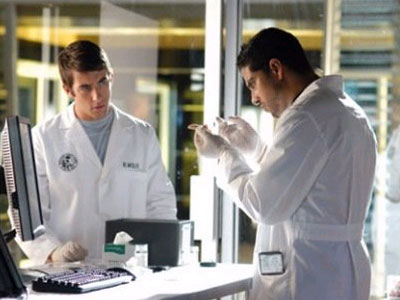Forensic Science System Needs Overhaul

On CSI, forensic science nearly always leads to a closed case. Reality is far different. And the system needs vast change, a new report claims.
With the exception of nuclear DNA analysis, says the report from the National Research Council, "no forensic method has been rigorously shown able to consistently, and with a high degree of certainty, demonstrate a connection between evidence and a specific individual or source."
That means fingerprinting techniques and lie detection methods, among others, can lead to convictions of innocent people and, of course, fail to help convict bad guys. The report writers were careful not to pass judgment on any specific past cases, however. Rather, they looked at the overall state of things.
Other studies have shown the weaknesses of some common methods used in courtrooms:
- In 2002, a study by the National Academy of Sciences revealed that "polygraph tests can discriminate lying from truth telling at rates well above chance, though well below perfection."
- A study in 2005 found that though people often claim to recognize a suspect they had spotted from hundreds of feet away, a person with 20/20 vision can't recognize a celebrity's face at 110 feet.
- A study in the Journal of Criminal Law & Criminology indicated that there are hundreds of errors made each year in fingerprint matching.
The new, congressionally mandated report "finds serious deficiencies in the nation's forensic science system and calls for major reforms and new research," according to a statement released today by the National Academy of Sciences.
Rigorous and mandatory certification programs for forensic scientists are lacking, the report says, as are strong standards and protocols for analyzing and reporting on evidence.
Non-DNA forensic disciplines have important roles, the report states, but many need substantial research to validate basic premises and techniques, assess limitations, and discern the sources and magnitude of error. "There is a dearth of peer-reviewed, published studies establishing the scientific bases and reliability of many forensic methods," the committee writes. "Moreover, many forensic science labs are underfunded, understaffed, and have no effective oversight."
Sign up for the Live Science daily newsletter now
Get the world’s most fascinating discoveries delivered straight to your inbox.
Meanwhile, laws governing how crime is prosecuted vary greatly by state. Recently, Washington state proposed to collect DNA samples from suspects in cases as minor as shoplifting. Yet in Los Angeles, the police department recently was found to have in cold storage nearly 7,000 untested DNA samples from sexual assault cases. Last year the department let the deadline pass for prosecuting some 200 potential sexual assault cases without ever testing DNA evidence on file that might have resulted in convictions.
"Reliable forensic evidence increases the ability of law enforcement officials to identify those who commit crimes, and it protects innocent people from being convicted of crimes they didn't commit," said committee co-chair Harry T. Edwards, senior circuit judge and chief judge emeritus of the U.S. Court of Appeals for the District of Columbia Circuit. "Because it is clear that judicial review alone will not cure the infirmities of the forensic science community, there is a tremendous need for the forensic science community to improve."
Edwards and his colleagues today urged Congress to establish a new, independent National Institute of Forensic Science to lead research efforts, set and enforce standards for forensic science professionals and laboratories, and oversee education standards.










